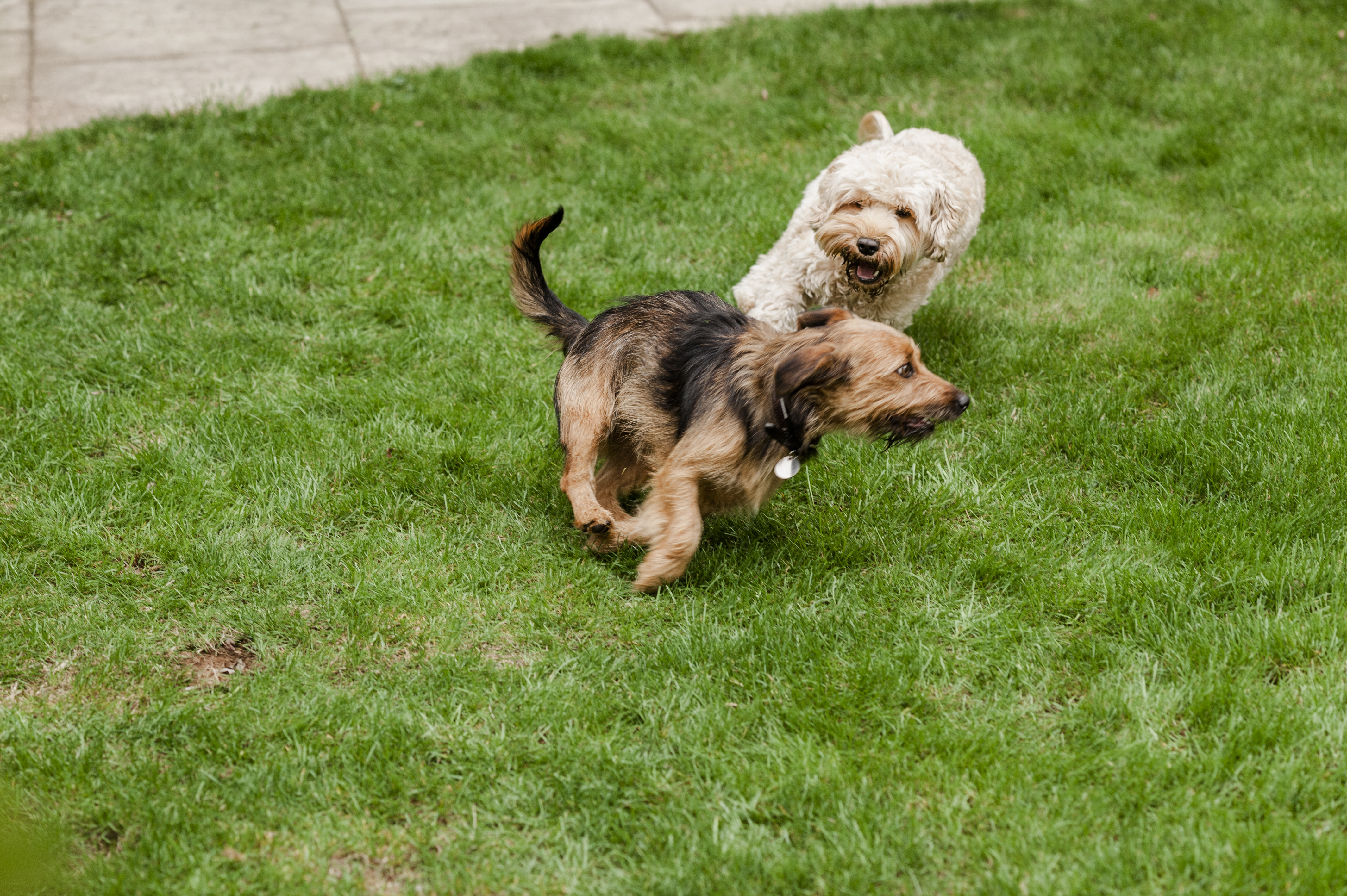
Dog friendly garden
We all want to do our bit for the environment, but we also want a safe space for our pets to enjoy with us.
Here’s how to make a garden fit for your pet while encouraging lots of nature to come and visit too!
Paved paths
Paving your garden will be better and safer for pets than other options, like gravel or stones, which can get stuck in paws and can pose a choking hazard.
Weaving a paved path through any plant beds can also help to establish boundaries for your dog and can be used as a training aid when helping them to understand where they’re allowed to roam.
High fence
We’ve all seen Homeward Bound (if you haven’t, please put that on your watchlist), that moment where Shadow makes a break for it and jumps the fence on a mission to find his owners?
Well, as fun as their adventure may be to watch, the reality of losing your pet is a tough one and can be heartbreaking.
Making sure you have strong, high fences with no gaps needs to be a top priority when designing your garden – it’ll give you such peace of mind knowing your dog can’t escape.
Lawn
A lawn is great for playtime with your dog – here you can spend time with them building the bond between you with lots of fun games.
Shaded areas
Summer sun can cause heatstroke in dogs, so it’s important to plan ahead as your dog will naturally want to be out in the garden with you.
Planting large shrubs or trees will help keep your dog cool in the summer heat. Though be sure to keep your pets out of extreme temperatures and keep them inside during the hottest points of the day.
Paddling pool
If your dog loves a swim or a paddle, a paddling pool is the perfect thing to keep them nice and cool in the heat, along with keeping it interesting for them. You can encourage them to splash about by throwing a ball in and asking them to retrieve it. The best pools for this are hard plastic pools, so that your dog doesn’t have a chance to deflate it with their activities.
If it looks like your dog is drinking too much of the water or splashing about too much, give them a little time out so they don’t overdo it in the heat. A good way to calm them down is to throw some treats on the ground in the garden and ask them to ‘find it’.
Dig pits
For dogs who like to dig, a sand pit or a nice bit of soil in the garden can give them a manageable outlet for their instincts and help to stop them digging up your lovely flower beds!
Dog friendly plants
Certain shrubs are sturdier and can withstand excitable dogs, such as lavender and shrub roses, which can also make pretty editions to your garden borders.
Other dog friendly plants include:
- Snapdragons
- Michaelmas daisies
- Camellias
- Honeysuckle
- Sunflowers
Herb gardens
A herb garden is a great edition to your garden for both adding some flavour to your cooking and to encourage the bees and the butterflies.
You can pot these to enjoy and attract wildlife:
- Basil
- Thyme
- Rosemary
- Mint
- Lemon balm
- Sage
Sensory garden
A sensory garden is made to play with the senses, so can be very mentally stimulating for your dog. Be careful not to plant anything that is toxic to dogs.
Here are some examples of dog friendly plants and what they can provide your pooch:
- Lavender and rosemary: Potent smells for them to investigate
- Mint and lemon balm: Can help to aid digestion and some would say that it is energising to sniff and chew on
- Wheatgrass: Super easy to grow and can help to boost energy levels when digested
- Pansies: Dogs can see in blues and yellows, so pansies provide great visual stimulation for them
- Chamomile: There is anecdotal evidence that chamomile is good for anxiety and stress and can help with skin and stomach upsets
- Meadowsweet: Dogs enjoy the smell of this one
- Thyme: Your pooch may enjoy a nibble on a bit of thyme
Wildlife friendly garden
Wild patches
Leaving certain parts of your garden untouched is perfect for wildlife - encouraging bees and butterflies as well as lots of other insects which, in turn, attracts birds.
Pond
A fenced off pond, so that your pet can’t get to it, also draws in lots of wildlife and can keep them going, by offering a much-needed drink to wild animals in the heat of summer.
Bird feeders
Carefully place any birdfeeders out of the way so that cats can’t get to them.
Bird and bat boxes
These encourage birds and bats into safe spaces to breed, making it more difficult for wandering cats to get their paws on them.
Create wildlife space
You can create little pathways into your garden, leaving small gaps in the bottom of the fence – big enough for a hedgehog and other small creatures to pass through your garden, but small enough that your dog can’t get through.
Leaving little wild patches also gives hedgehogs and small wildlife somewhere to sleep. Hedgehogs are great natural deterrents for slugs, snails and insects too – saving your herbs and any veggie patches!




